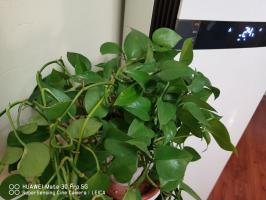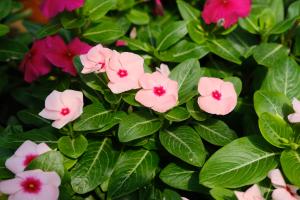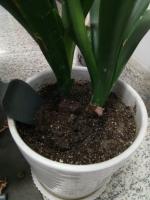Why is Cohesion between Water Molecules Important in Plants?
Plants have a complex system of transporting water and nutrients from the roots to different parts of the plant. This system is made possible by the cohesive properties of water molecules.
Cohesion in Water Molecules
Cohesion refers to the ability of water molecules to stick together. This property arises due to hydrogen bonding between water molecules. Hydrogen bonds form between the slightly positively charged hydrogen atom of one water molecule and the slightly negatively charged oxygen atom of another water molecule. The hydrogen bonds are weak individually, but collectively, they create a strong bonding force that holds the water molecules together.
The Role of Cohesion in the Transport of Water in Plants
The ability of water molecules to stick together plays a key role in the transport of water and nutrients in plants. The cohesive properties of water enable it to travel up the entire length of the plant, from the roots to the leaves, via the xylem vessels. The xylem vessels are essentially a network of hollow tubes that run from the roots to the leaves of the plant. Water is drawn up the plant through the xylem vessels via a process called transpiration.
Transpiration and Cohesion
Transpiration refers to the process by which plants lose water in the form of vapor through their leaves. As water evaporates from the leaves, it creates a negative pressure or tension within the xylem vessels. This negative pressure pulls water up the xylem vessels from the roots, almost like a straw. The cohesive properties of water play a key role in this process by allowing water molecules to stick together and form a continuous column within the xylem vessels.
Cohesion-Tension Theory
The cohesion-tension theory explains how water is transported through plants via transpiration. This theory suggests that as water evaporates from the leaves, it creates a negative pressure within the xylem vessels, which results in tension. The cohesive properties of water allow it to maintain a continuous column within the xylem vessels, even when the column is under tension. This continuous column of water is what allows for the movement of water and nutrients throughout the plant.
Conclusion
Cohesion between water molecules is a critical component of the plant's ability to transport water and nutrients throughout its body. The cohesive properties of water allow it to stick together and form a continuous column within the xylem vessels, which is vital for the process of transpiration. Without cohesion, water and nutrients would not be able to travel up the plant efficiently, and plants would be unable to survive.

 how many times do yo...
how many times do yo... how many planted tre...
how many planted tre... how many pine trees ...
how many pine trees ... how many pecan trees...
how many pecan trees... how many plants comp...
how many plants comp... how many plants can ...
how many plants can ... how many plants and ...
how many plants and ... how many pepper plan...
how many pepper plan...
































